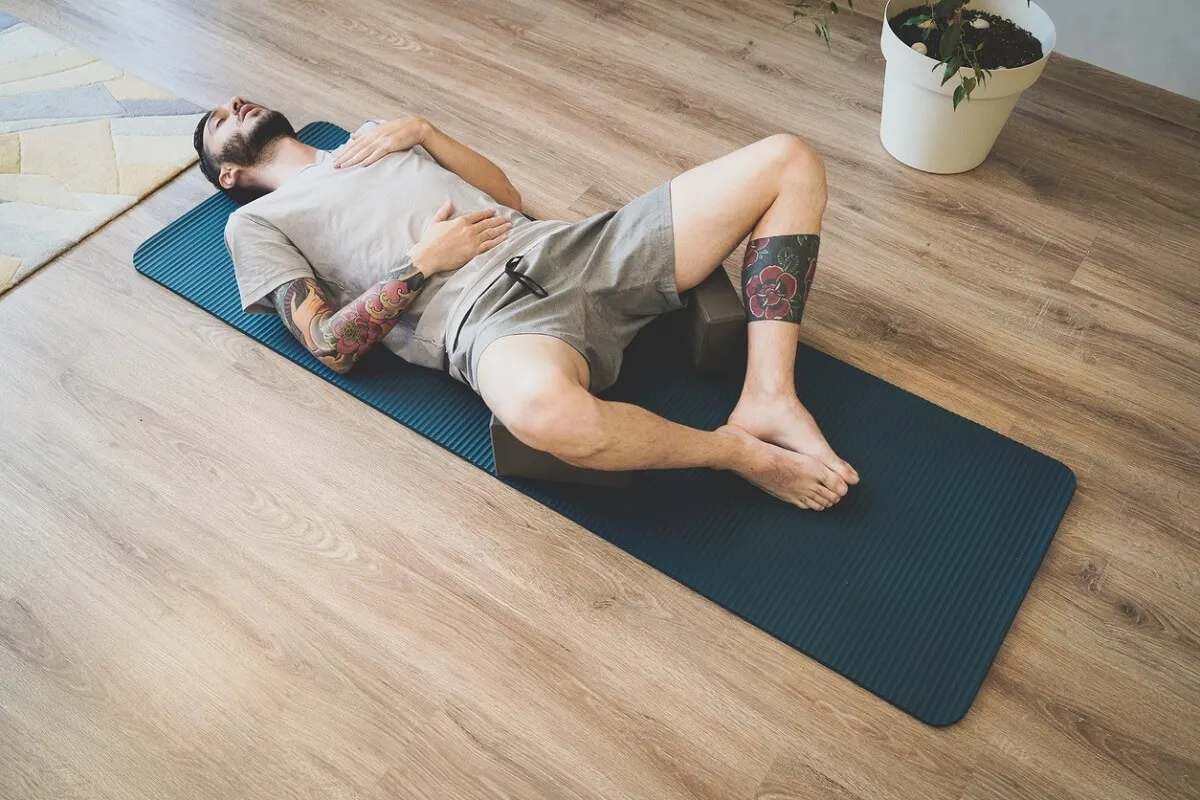Micromeditation: What It Is, Its Benefits, and How to Practice It


Reviewed and approved by the psychologist Elena Sanz
Micromeditation is a trend associated with short meditation practices. In general, it’s intended to take only a few minutes. It’s a great solution for those who wish to meditate but don’t have much time to do so.
Today’s world is dominated by hyperactivity, over-connectedness, and chaos, to a greater or lesser extent. In these circumstances, it’s not at all easy to have enough time to do a classical meditation. Micromeditation can be a decent substitute for this. So, what is it? And how can you practice it?
Let’s take a look!
What is micromeditation?
Micro-meditation is a short-duration meditative practice. It can be done in a range of 2 to 10 minutes. Because of this, it’s a means of incorporating meditation into our lives without having to make any major changes.
Its goal is essentially the same as that of typical meditation. It has to do with redirecting attention, increasing awareness of the body and emotions, and regaining energy. This leads to serenity.
This form of brief meditation allows the essential benefits of meditative practices to be introduced into daily life. It involves making several pauses or stops throughout the day to harmonize the breath and reconnect with oneself.

The benefits of micromeditation
It’s common to accumulate tension and frustration throughout the day which sometimes leads to fatigue or dispersion. This can also ruin our mood. In fact, stress and fatigue lead to lower productivity and often more mistakes.
Micro-meditation is a way to take a break from the day and bring everything back into balance. Specifically, it’s a way to achieve emotional regulation throughout the day. There’s still not enough evidence to claim that it provides the same benefits as classical meditation, but it does contribute to well-being.
Therefore, it’s advisable to make it a daily habit. At the same time, it can be a great gateway to most traditional types of meditation. The latter offers great benefits, such as promoting brain health.
We think you may also enjoy reading this article: What is Vipassana Meditation and What Are the Benefits?
How to practice micro-meditation
Typically, the practice of meditation should be extended for 20 or more minutes. However, in the case of micro-meditation, this time is reduced to a range of between 2 and 10 minutes, depending on the availability of each person.
So, what can be done in that time? The following are some meditation exercises that can be done in just a few minutes.
Conscious breathing
This exercise is the basis of both micro-meditation and classical meditation. To do it, all you need is to sit down, close your eyes, and start breathing deeply.
The goal is to become aware of the way the air enters and exits through the nostrils. The success lies in concentrating only on this. Ten breaths are enough, but if there’s more time, reaching 30 breaths is ideal.
A body scan
In this case, just sit down, close your eyes, and take three deep breaths. Then, concentrate on the sensations in your feet, ankles, calves, and knees.
After this, continue the same process throughout the body until you reach the crown of your head. This is a great way to connect with the center of the body. It can be done in three minutes.
Absorbing a mantra
This type of micromeditation consists of once again sitting, closing your eyes, and beginning to breathe deeply. Then, repeat a personal mantra and let yourself be absorbed by it.
For example, “I am well,” “I can count on myself,” or similar positive affirmations are all useful.
Micromeditation of the three senses
The steps to follow in this exercise are as follows:
- Concentrate on hearing, sight and your skin.
- Close your eyes while breathing deeply and focus your attention on a sound in the environment. Repeat until completing three sounds.
- Then, repeat the previous exercise. However, this time do this while concentrating on three skin (feeling) sensations.
- Do the exercise again, now with your eyes open and focusing your gaze on three visual objects, sequentially.
Tips and recommendations for micromeditation
The best option is to introduce micromeditation into your daily life. After all, this is a practice that should be done every day to show its true benefits. It’s advisable to do micromeditations of 1 to 3 minutes until you complete 12 minutes per day.
For some people, it’s best to start with 3 minutes daily and then gradually increase the time. When it comes to meditation, training and experience play in our favor. The most important thing is to maintain consistency.
Some teachers recommend doing a few stretches before micro-meditation to eliminate excess physical tension. Ideally, the practice should be done in a place where there are no interruptions and where it’s comfortable.
In all exercises, it’s very important to sit with your back as straight as possible. This helps you not to doze off and, according to some practitioners, allows the energy to flow.

We think you may be interested in reading this, too: Learn to do Walking Meditation to Relax and Exercise
Some final recommendations for micro meditation
The most difficult part is introducing micro meditation into your daily routine. It often happens that, in the midst of daily occupations, it’s very easy to forget. In this sense, the best option is to make an exact schedule to implement this form of meditation.
When the habit is successfully introduced, a very healing effect is produced. The practice will become easier and easier and its benefits will be better appreciated. It’s very frequent that micromeditation leads to longer mediation practices little by little.
All cited sources were thoroughly reviewed by our team to ensure their quality, reliability, currency, and validity. The bibliography of this article was considered reliable and of academic or scientific accuracy.
- Sharma H. Meditation: Process and effects. Ayu. 2015;36(3):233-237. doi:10.4103/0974-8520.182756
- Ussher M, Spatz A, Copland C, Nicolaou A, Cargill A, Amini-Tabrizi N, McCracken LM. Immediate effects of a brief mindfulness-based body scan on patients with chronic pain. J Behav Med. 2014 Feb;37(1):127-34. doi: 10.1007/s10865-012-9466-5. Epub 2012 Nov 6. PMID: 23129105.
- Lynch, J., Prihodova, L., Dunne, P. J., Carroll, A., Walsh, C., McMahon, G., & White, B. (2018). Mantra meditation for mental health in the general population: A systematic review. European Journal of Integrative Medicine, 23, 101-108.
- Gutiérrez, G. S. (2011). Meditación, mindfulness y sus efectos biopsicosociales. Revisión de literatura. Revista electrónica de psicología Iztacala, 14(2), 223.
This text is provided for informational purposes only and does not replace consultation with a professional. If in doubt, consult your specialist.








